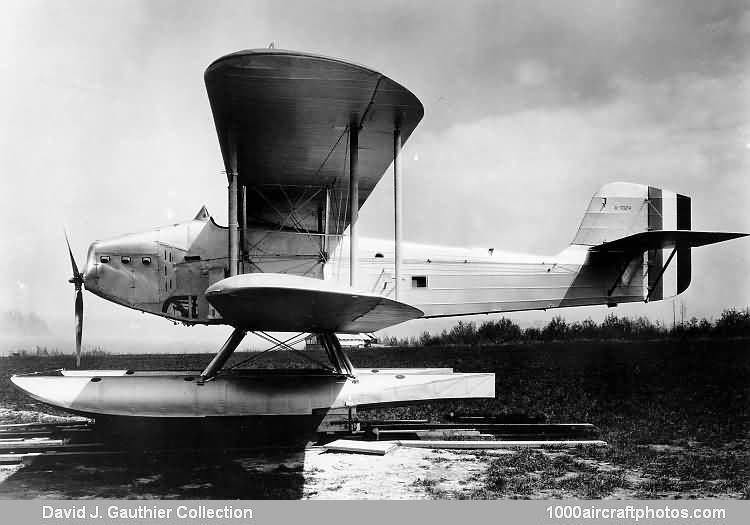Structure was all dural with fabric covering in place of the wood wings and steel tube fuselage of the Martin. The pilot and bombardier/navigator occupied a side-by-side cockpit just aft of the engine, the bombing station was on the floor just ahead of the lower wing, and a rear gunner's station was located on the top of the fuselage between the wing and the tail. The wings folded aft at the rear spar-center section strut junction, reducing the overall span to 21 ft 8 in (6.60 m) for shipboard storage. The four-wheel landing gear was divided to permit torpedoes to be carried under the fuselage and twin floats could be substituted for the wheels. Power plant was a 730 hp Packard 3A-2500 engine, while armament consisted of two 0.30 in (7.62 mm) machine guns and a 1,740 lb ( kg) torpedo.
The first TB-1, retroactively identified as XTB-1 after Navy adopted the experimental prefix in 1927, flew on May 4, 1927, and all three were delivered in June (BuNos. A-7024 to A-7026, c/n 834 to 836). Before the TB-1s were completed the Navy had decided against dependence on a single power plant for such a heavy aeroplane and developed the basic design into a twin-engine model with only a 2 ft (61 cm) increase in wing span. This model, powered with two 525 hp Wright Cyclone radial engines, was built by Douglas as the T2D-1."
